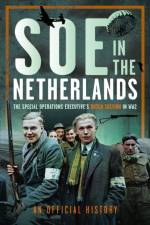av An Official History
319,-
It was every British servicemanâEUR(TM)s duty, be he soldier, sailor or airman, to attempt to evade capture if stranded behind enemy lines or escape if captured. As there were potentially thousands of men who would find themselves cut off or captured during the Second World War, a branch of military intelligence, M.I.9, was set up in 1939 to instruct servicemen in evasion and escape techniques. Such was the success of M.I.9, and the determination and ingenuity of individuals and groups, about 35,000 Allied military personnel escaped PoW camps or evaded capture and made their way to Allied or neutral countries. How this highly secret unit was set up and organised, and how its great success was achieved, was documented by M.I.9 officers towards the end of the war âEUR" and is published here for the first time. The history includes details of the lectures given to troops on how to avoid capture if on the run in enemy occupied territory (more than 2,000 lectures were given, to over half-a-million men), and of secret equipment issued to them to help them escape, such as the well-know silk maps and small but comprehensive escape kits. When servicemen escaped and returned to the UK, they were interrogated by specially selected M.I.9 officers and their stories were used to show troops how they too could evade capture. These provide some of the most fascinating, and often funny, stories to come out of the Second World War. How, for example, one man had to cross a bridge over a canal in Holland where a German sentry was stood on the other side. As he considered his options a Dutch woman approached pushing her baby in a pram. The man explained that he was British and the lady handed him the pram and put her arm through his, and together they crossed the bridge and passed the sentry. On another occasion at a railway station, an evader attracted the attention of a German officer. A group of French women arrived, and the man rushed over to the group, embraced one of the women and asked them to speak to him in French. This they did, pretending he was their friend, and the officer turned away. Such stories helped show servicemen how to forge documents, how to travel through enemy-occupied countries without being detected, what disguises could be used that would not attract the attention of the enemy, and also provided lists of local people willing to help escapers âEUR" and this included Pope Pius XII, who actually had a private meeting with one of the escapers in the Vatican! The troops were also instructed how to write coded messages in letters to the UK from PoW camps. All this is revealed in this utterly fascinating book.












